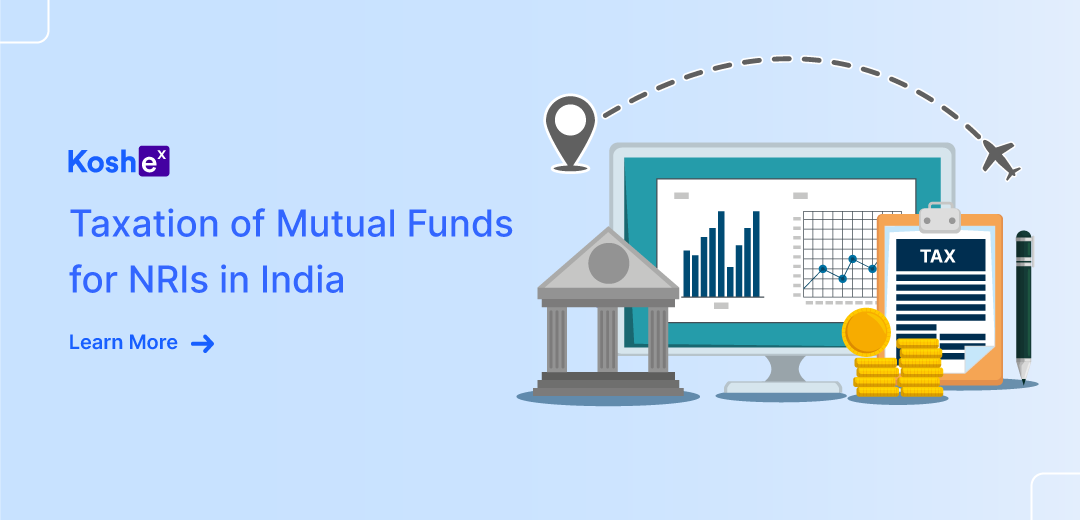Wondering whether to invest in regular or direct mutual funds? Not sure what the differences are? There are three major differences, all interlinked. Regular MFs are generally sold through a mutual fund distributor, and charge a commission fee, whereas Direct mutual Funds are sold through online platforms in DIY mode.
Generally, both plans have their advantages and disadvantages.
MF Investors should make informed decisions based on their risk appetite, understanding of how mutual funds work, and how it affects them in the long term. They should accordingly invest in regular or direct MF plans. Sign up today on the Koshex platform to start your investment journey.
Total Expense Ratio (TER)
For ongoing expenses incurred by the company, which manages a mutual fund to serve the investors, a TER (Total Expense Ratio) fee is levied on the MF investors. Keep in mind that TER is levied against the assets of the schemes managed by the company on a pro-rata basis.
It is absorbed to accommodate the Net Asset Value (NAV) of the MF unit. TER may include supervision fees, custodian fees, registrar’s fees, advertisement costs, and administration costs.
Service Distribution cost is the charge paid to the suppliers / financial consultant who generally acts as a linkage between the MF investors and asset management company (AMC).
Remember, TER is one of the most important measures to calculate and differentiate between Regular and Direct plans. To differentiate between the 2, firstly, we must understand what Regular and Direct MFs are all about.
Regular Mutual Funds
Regular plans can be purchased from mutual fund suppliers. Their services include guiding MF investors on which schemes to invest in, collecting MF investors Know Your Client (KYC) documents, and also helping in navigating through the complete investment process, including:
- collecting applications
- redemption requests
- submitting our KYCs
- providing the account statements when required
- managing communication with RTA (Registrars and Transfer Agents) on behalf of the investors.
Direct Mutual Funds
When investors can directly purchase from the AMC, and no broker is involved, this pertains to direct mutual funds plans. Investors can directly invest in the plans by visiting the website of the AMC or the nearest registrar’s office in their city by submitting a hard copy.
Investors can also invest through a SEBI-registered investment advisor. However, one should remember they would charge certain service fees for offering their services.
Major Differences Between Direct And Regular Mutual Fund -Funds
Net Asset Value (NAV) of underlying MF:
The expense ratio, as explained above, of any fund gets adjusted because of the expense loading on the NAV. Hence expense ratios of regular plans are on the higher side than direct plans, resulting in higher NAVs of direct plans.
In short, the return on investment generated on a direct plan will be higher than a regular plan. Considering this, direct plans are better for generating higher NAVs.
Return on Investment (ROI):
Continuing with the above understanding of the expenses ratio, e.g., if the expense loading on the regular plan is higher by 1%, then technically, the ROI generated on the regular plan will be lesser by 1% for the first year.
In Compounded Annual Growth Rate CAGR terms, it will affect adversely, and the overall return generated by the regular plan will be substantially low compared to the direct plan.
Role of Investment Advisor:
Online platforms offered by the AMC have made it simpler for MF investors to choose from various MF options available in the MF industry.
However, investment advisors play a critical role in guiding investors new to the mutual fund market; for example, they guide us concerning different offerings, such as hybrid funds, debt funds, etc., based on the various needs and the lifestyle of the inventors.
Conclusion
For investors, direct plans, in comparison to regular plans, give higher returns. Given the longer time horizon, this could adversely impact the overall CAGR ROI of the fund comparison to direct plans. Investing in Mutual Funds can be complex and time-consuming. Ensure you have a basic understanding of the industry before choosing Direct plans.
Regular schemes can be a better option if you need assistance making investment decisions, such as identifying your risk tolerance, diversifying your assets, and selecting appropriate mutual fund schemes that align with your long-term goals.
Each investor has different knowledge and understanding of the mutual fund markets. To make informed decisions, it’s important to assess the advantages and disadvantages of each scheme and select options that align with your long-term goals and interests.
To learn more and understand the differences in detail, sign up today on the Koshex platform.
Frequently Asked Questions
- Can we understand when investing whether we have invested in the direct plan or a regular one?
Yes, we can check the statement of accounts of every scheme we have invested in. This statement can be provided by the AMC or from the broker where we have the DEMAT account.
We can also get the statement of accounts from our RTA’s if we have opted for regular plans. If the investment is in the direct MF scheme, then there would be a word mentioned as “DIRECT.”
- Can I switch over from a regular plan to direct and vice versa?
Yes, it is possible to switch from regular to direct and vice versa anytime by giving a request to AMC or the RTA. However, be aware of the charges levied by the AMC in this regard, such as exit load, in case we switch from one scheme to other during the exit load period.
However, there would be no charges if the redemption/switch is post-exit load period. Apart from the above charges, be aware of the tax consequences, such as short-term and long-term taxes based on the holding period. another - What are the charges paid to AMC?
Generally, ongoing fees are paid to the distributors every month on the scheme AUM of the distributor. As long as you are invested, your supplier/distributor/investment advisor will keep receiving fees/ commissions market value of the total AUM.
This fee is again added back to the expense ratio on a pro-rata basis to adjust the daily NAV of the MF. In short, our NAV and ROI are adjusted towards the above fees paid to the distributors upfront.









Leave a Comment